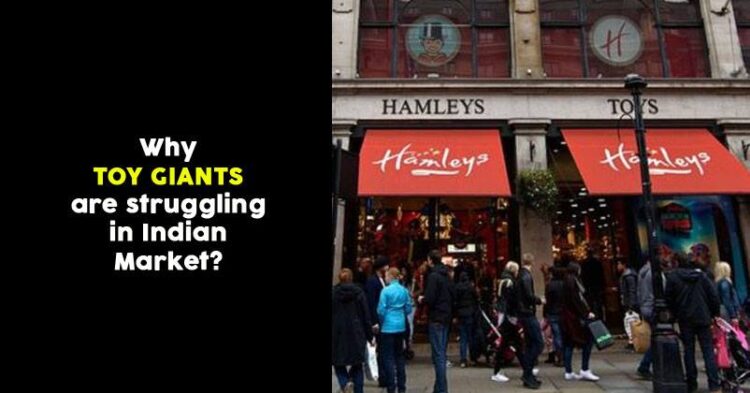When thinking of toys, the obvious thought that strikes most of us is “Made in China”, the thread most common thread one comes across at a toy store.
Relaxed manufacturing norms have made China the base from where nearly three-quarters of the world’s toys originate.
While the Toy Industry in India is booming, the unbranded products from the Asian neighbour account for up to 90% of the domestic toy market which is valued at $1.5 billion leaving little room for branded players like Funskool, Lego, Mattel, Hasbro, and even the iconic Hamleys to get a toehold in the country.
Over the years, Chinese manufacturers have managed to suppress toy prices to rock-bottom levels.
“Low-priced Chinese toys are either mass-produced or are rejects from other countries that are diverted to the Indian sub-continent (or) Africa. Further, Chinese toys are toxic in high proportion,” read a July 2018 report by India’s parliamentary standing committee on commerce.
Though the most formidable, the Chinese threat is not the only trouble brewing for toy makers.
Retail trouble
Organised toy retailers in India also have to deal with high rentals, which affect their margins.
“Rentals at leading shopping malls can be as high as Rs1,000-1,200 per square feet. It’s very steep and most of the time does not justify the investments vis-а-vis revenues,” said Sandeep Bhardwaj, a marketing expert and the dean of Vivekanand Education Society Institute of Management (VESIM), Mumbai.
But stores are vital to increase the visibility of a brand.“Single-brand retail stores have become important for toy brands to increase their market presence and reach out to the right target audience,” Amit Kararia, senior regional sales manager for South Asia at Lego, told Mint last year.
Hence, toys brands are forever on the lookout for standalone stores that will also curb their rent outgo. Over the last few years, Funskool has launched 16 single-brand retail outlets in tier 2 cities like Udaipur, Indore, Amritsar, and Thane. It also has plans to expand into smaller towns.
A successful case of the low-cost, single-brand retail model in India is the sports gear maker Decathlon. The French retailer has shunned the mall-based model and created warehouse stores with value-for-money pricing.
“The toys market may be ripe for a similar disruption,” said Umashankar Venkatesh, professor, marketing, Great Lakes Institute of Management, Gurugram.
Digital play
Yes! Its the digital era and there’s no denying to it! The increasing popularity of video and online gaming has surely affected brands like Hamleys that play in a different area altogether.
As per KPMG India’s online games market is expected to reach Rs11,900 crore by the year 2023.
Also Read: Know Mukesh Ambani’s Master Plan Behind Buying International Toy Chain Hamleys
Taking note, players like Funskool and Mattel have been co-creating products by engaging with various age groups. They use targeted communication to market products that combine the digital with physical tactility.
While the Indian toys market is expected to grow to $3.3 billion by 2024, according to the market research firm IMARC the bigger question that remains is what share of this will be from branded players!
















